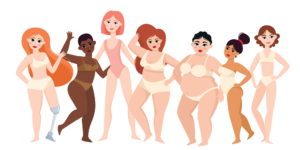On another episode of “wow this is a surprising but not entirely shocking fact” from this book is: animals can fall prey to the deadly sins! Essentially, animals can get STDs, become addicted to drugs, become obese, and rebel as youths- and for reasons that aren’t their faults.
In the STD camp (one that is definitely not recommended) you might find ladybugs with mites, koalas with chlamydia, or Dungeness crabs with worms. Even though animals can’t wear condoms, they still have methods of protection… which is mainly they don’t mess with junk that looks diseased. Though this is generally *quite scandalous* the main takeaway from this section is that some of these animals are STD free in populations that are absolutely saturated with transmitted diseases, which could help doctors and vets identify certain traits that may assist immunity.

Now for the drug content! In my opinion, the main takeaway for me was almost a destigmatization of drug addictions. Dr. NH and Bowers mention water buffalo in Asia that can’t get enough of poppies on the sides of the river. Dolphins intentionally get pricked by poisonous fish to get a high. And, just like in people, animals are more likely to become addicted to a drug the earlier they encounter it, and can also be “passed down.”
Thanks to Zoobiquity, it’s going to be a bit more difficult for people to fat-shame healthy strangers on the internet- what a shame…. Turns out that an individual’s gut microbiome (the bacteria that live in your gut) can influence how your body extracts calories. Though this might be a correlation versus causation debate right now, human and microbiome dynamics have a correlation to obesity. There’s a lot of research going into what may predispose a human or animal to this, but the bottom line is that no one can say it’s purely because of MacDonald’s or because people don’t work out enough- ignore those ignorant bastards 🙂 .

To wrap up this bit is a healthy dose of teen rebellion. Essentially, young animals like gazelles and sea otters venture disproportionately out into dangerous situations to test their limits. Fewer of them make it back than adults that try the same thing, but the ones who survive make it longer- it’s a classic example of survival of the fittest. It correlates to the higher rate of traffic accidents in teens and reckless injuries. Unfortunately, these rebellions also relate to pressurized social hierarchies… ie animals get bullied too.
There are so many things we like to think are purely human, but in reality they’re so connected to the rest of our world- even our supposed “sins.”